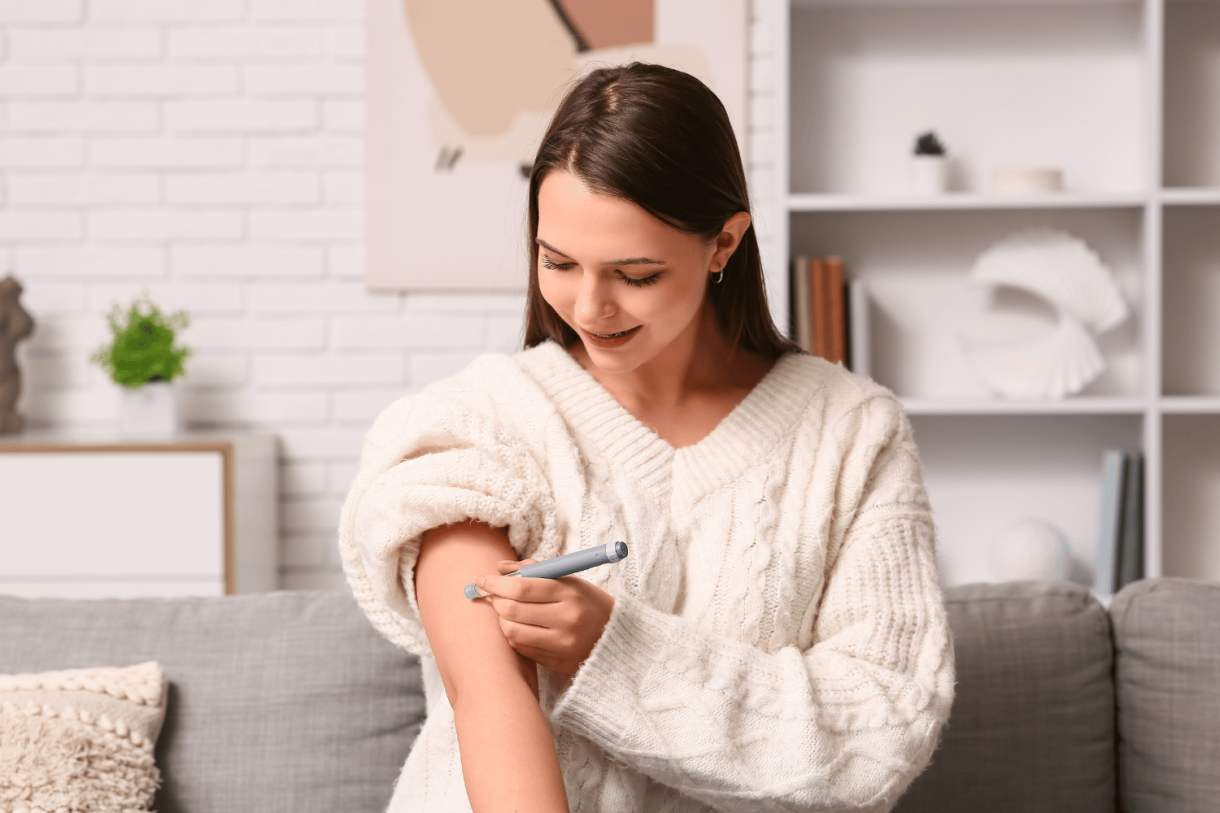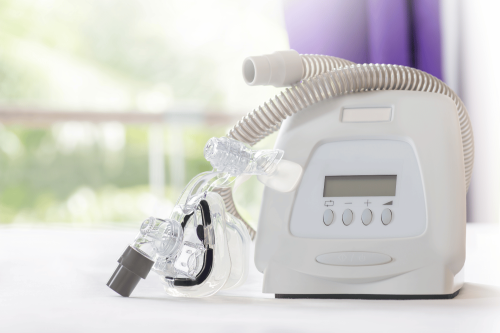
Diabetes is often associated with high blood sugar, frequent urination, or fatigue. But did you know it can also show up on your skin? Over 37 million people in the U.S. have diabetes, yet many are unaware of the skin-related symptoms that could signal this condition.
From dark patches to slow-healing wounds, your skin might be giving you clues about your blood sugar levels. These signs don’t always mean diabetes, but they shouldn’t be ignored. Read on to learn which skin symptoms could indicate diabetes and how to address them.
What Is Diabetes?
Diabetes is a chronic condition that affects how your body processes blood sugar (glucose). It occurs when the pancreas doesn’t produce enough insulin or when the body can’t effectively use the insulin it makes. There are two main types: Type 1, an autoimmune condition, and Type 2, which is often linked to lifestyle factors. Common symptoms include excessive thirst, frequent urination, and fatigue. However, diabetes can also cause changes in your skin, which may be an early warning sign of the condition. So, what kind of skin changes should you watch out for?
What Is Diabetes?
8 Diabetes Symptoms That Show on Your Skin
Your skin can reveal more about your health than you might realize. From unusual rashes to dark patches, your body could be sending signals about underlying conditions. Here are eight skin symptoms that could indicate diabetes.
1. Dark Patches of Skin (Acanthosis Nigricans)
Acanthosis nigricans is a condition that causes dark, velvety patches of skin to form, typically in body folds like the neck, armpits, or groin. The affected skin may feel thicker than the surrounding areas and may occasionally itch.
This skin change is strongly associated with insulin resistance, which is a key feature of Type 2 diabetes. The presence of these patches can be a sign of prediabetes or undiagnosed diabetes, making it essential to consult a healthcare provider if you notice them.
2. Slow-Healing Wounds
Diabetes can negatively affect blood circulation and cause nerve damage, a condition known as neuropathy. This combination can make it difficult for the body to heal correctly. Cuts, scrapes, or sores, particularly on the feet, may take an unusually long time to recover and become more susceptible to infection.
If you find that wounds are not healing as quickly as they should, it’s crucial to seek medical advice. Proper management can help prevent serious complications, such as skin ulcers and infections.
3. Itchy Skin
Persistent itching, medically known as pruritus, can be a symptom of diabetes. High blood sugar levels can lead to dry skin and poor circulation, both of which contribute to itchiness, often felt in the lower legs and feet.
In some cases, the itching may also be due to a yeast or fungal infection. These infections are more common in individuals with diabetes due to elevated glucose levels, which create a favorable environment for fungal growth.
4. Yellow, Red, or Brown Patches (Necrobiosis Lipoidica)
Necrobiosis lipoidica is an uncommon skin condition often linked to diabetes. It typically begins as small, raised, solid bumps that slowly evolve into larger patches of thinned, shiny skin. These patches can be yellow, red, or brown and are frequently found on the shins.
The affected areas may become itchy and painful. Although necrobiosis lipoidica itself is not dangerous, its appearance can be an indicator of poorly controlled diabetes and warrants a medical evaluation.
5. Blisters (Diabetic Bullae)
Some people with diabetes may develop blisters, known as diabetic bullae. These blisters can appear suddenly on the hands, feet, legs, or forearms and often resemble burn blisters, but they are usually painless. They can occur singly or in clusters.
While they are rare, diabetic bullae are more common in people who have had diabetes for a long time or have diabetic neuropathy. These blisters typically heal on their own without scarring, but they are a sign that diabetes may not be well-managed.
6. Skin Infections
People with diabetes have an increased risk of developing both bacterial and fungal skin infections. High blood sugar can weaken the immune system and impair the body’s ability to fight off pathogens.
Common bacterial infections include styes around the eyes and boils. Fungal infections, such as athlete's foot, jock itch, and yeast infections (candidiasis), are also prevalent. These infections often cause redness, swelling, and discomfort. Keeping blood sugar levels in a target range is essential for reducing this risk.
7. Thickened Skin (Digital Sclerosis)
Digital sclerosis is a condition characterized by the development of tight, thick, waxy-feeling skin, most commonly on the backs of the hands. The skin on the fingers and toes can also become stiff, sometimes making it difficult to move the joints.
This symptom is more frequently seen in individuals with Type 1 diabetes who have had the condition for many years. It is thought to be a result of damage caused by long-term high blood sugar levels.
8. Yellowish Skin Growths (Xanthomas)
Eruptive xanthomas are firm, pea-like enlargements on the skin that have a yellowish color and are often surrounded by a red halo. They can be itchy and tend to appear on the feet, hands, arms, legs, and buttocks.
These skin growths are caused by very high levels of fats (cholesterol and triglycerides) in the blood, which can occur in people with poorly controlled diabetes. While the bumps themselves are harmless, they are a clear warning sign of underlying metabolic issues that require medical attention.
Lesser-Known Skin Changes Caused by Diabetes
In addition to the eight main symptoms, diabetes can lead to other skin changes that might seem less obvious but still provide important clues about your health.
Dry, Cracked Skin
Chronically high blood sugar can cause dehydration, leading to dry, rough, or flaky skin. This is especially common on the hands, feet, and elbows. Sometimes the skin can crack, increasing the risk of infection. Regular moisturizing and well-controlled blood sugar can help prevent these issues.
Skin Tags
Skin tags are small, soft, flesh-colored growths that often appear in areas where skin rubs together, such as the neck, armpits, or groin. While skin tags are common in the general population, people with diabetes and insulin resistance tend to develop more of them. They are harmless, but are another sign to watch for.
Vitiligo
Vitiligo is a condition where patches of skin lose their pigment, resulting in white or lighter spots. It can occur in anyone, but it’s more likely in people with Type 1 diabetes due to its autoimmune nature. These discolored patches may be more noticeable in sun-exposed areas and can sometimes spread over time. Though vitiligo itself is not harmful, its presence may suggest an increased risk of other autoimmune issues.
These lesser-known skin changes, while not as immediately alarming as some classic symptoms, are worth noting, especially if you have or are at risk of diabetes. If you notice such changes, a healthcare professional can help you determine the cause and manage your skin health more effectively.
Listen to Your Body: Catch Diabetes Early & Stay Prepared
Diabetes is easier to manage when it’s caught early, but the signs aren’t always obvious. Your skin can provide important clues about your health, so don’t ignore changes like dark patches, slow-healing wounds, or persistent itching. These subtle signs might be your body’s way of signaling an underlying issue. If you notice any of these symptoms, consult a healthcare professional for proper diagnosis and treatment. Managing your blood sugar levels and maintaining a healthy lifestyle can help prevent complications and keep your skin healthy. By staying vigilant and proactive, you can catch diabetes early and take control of your health before it leads to more serious problems.Frequently Asked Questions (FAQs)
Q: What are the first skin signs of diabetes?
A: One of the earliest skin signs of diabetes is the appearance of dark, velvety patches of skin, a condition known as acanthosis nigricans. These patches are commonly found on areas like the neck, armpits, or groin and may feel thicker than the surrounding skin. Other early signs include dry, itchy skin, skin discoloration, or slow-healing wounds, which may indicate high blood sugar levels affecting skin health.
Q: Can diabetes cause skin infections?
A: Yes, diabetes can increase your risk of bacterial and fungal skin infections. High blood sugar levels can weaken the immune system, making it harder for the body to fight off infections. Common bacterial infections include boils, styes, and infected hair follicles, while fungal infections such as athlete’s foot, ringworm, and yeast infections (caused by Candida) are also more likely.
Q: How does high blood sugar affect the skin?
A: High blood sugar can have several adverse effects on the skin:
- Dehydration: Elevated glucose levels can draw moisture out of the skin, leading to dryness and cracking.
- Impaired Circulation: Poor blood flow can slow wound healing and increase the risk of infection.
- Nerve Damage: Diabetic neuropathy can cause itching or numbness, making it harder to notice injuries or infections.
- Skin Conditions: High blood sugar can also lead to specific conditions, such as diabetic blisters or shin spots (diabetic dermopathy).
Q: Are skin tags a sign of diabetes?
A: Skin tags—small, soft, flesh-colored growths often found on the neck, armpits, or eyelids—can be a sign of insulin resistance, a condition closely linked to Type 2 diabetes. While skin tags are common and not always a cause for concern, their sudden appearance or increase in number may warrant a discussion with your doctor.
Q: When should I see a doctor about skin changes?
A: You should consult a doctor if you notice:
- Persistent dark patches on your skin, especially on the neck, armpits, or groin.
- Slow-healing wounds or sores that don’t improve with basic care.
- Unusual rashes, blisters, or skin infections that recur frequently.
- Severe dryness or itching that doesn’t respond to moisturizers.
These symptoms could be early indicators of diabetes or other underlying health conditions. Early diagnosis and treatment can help prevent complications and improve overall health.








 Login with Google
Login with Google Login with Facebook
Login with Facebook